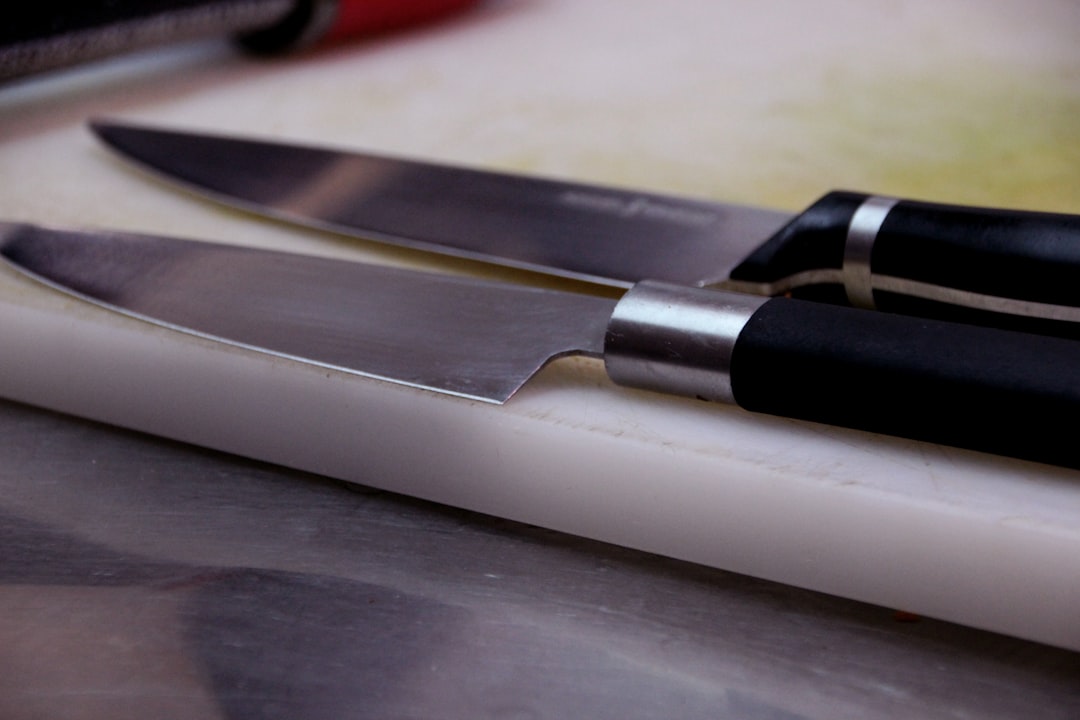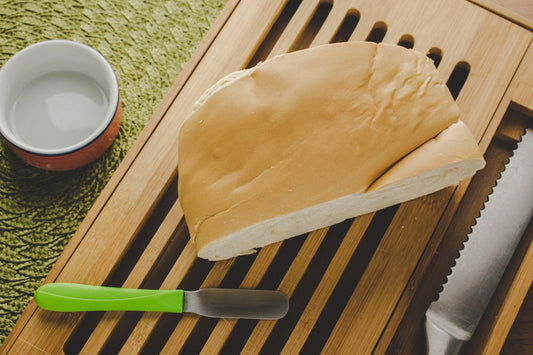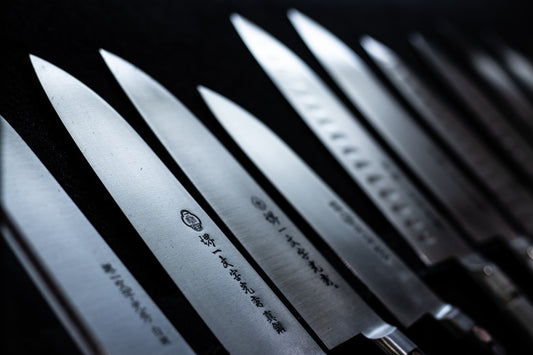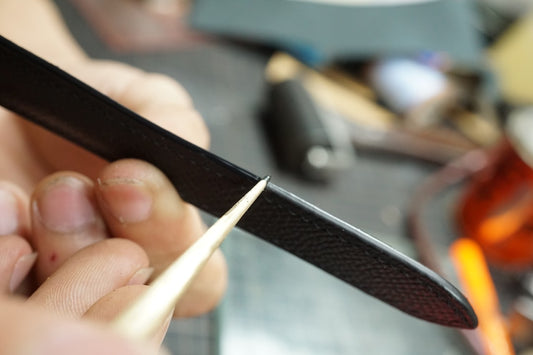
Share
Exploring the Advantages of a Santoku Knife and Other Essential Japanese Knives
Estimated Reading Time: 10 minutes
Key Takeaways
- The Santoku knife offers versatility, precision, and comfort for various kitchen tasks.
- Understanding the unique features of essential Japanese knives helps in choosing the right tool for specific culinary needs.
- Japanese knives are renowned for their craftsmanship, sharpness, and efficiency.
- Comparing Japanese knives to Western counterparts highlights their specialized functions and advantages.
Table of Contents
- Santoku Knife Advantages: Versatile Usage and Precision
- Gyuto Knife Review: Japanese Chef’s Knife Versatility
- Nakiri vs Western Vegetable Knife: Precision Vegetable Chopping
- How to Choose a Petty Knife: Blade Material and Handle Comfort
- Sujihiki vs Carving Knife: Thin Blade Advantage for Precise Meat Slicing
- Deba vs Boning Knife: Filleting Fish with Blade Thickness and Rigidity
- Kiritsuke vs Yanagiba: Blade Shape and Versatility for Sushi Making Knives
- Conclusion: Japanese Knife Craftsmanship, Precision, and Versatility
- Call to Action: Share, Discover, and Keep Learning
Santoku Knife Advantages: Versatile Usage and Precision
The Santoku knife offers a perfect example of Japanese innovation in cutlery. Let’s break down its unique advantages:
Origin and Iconic Design
- Born in Japan: The Santoku was developed as an answer to home cooks’ desire for an all-in-one blade.
-
Wide Sheepsfoot Blade: Its blade is wide and has a sheepsfoot shape—the spine curves gently down to meet a straight edge at a rounded tip. Unlike a pointed chef’s knife, the Santoku’s design minimizes accidental piercing and provides greater control (Kamikoto Blog).
- No pointed tip—ideal for safe, confident chopping
- Recognizable silhouette with a gentle curve on the spine
The “Three Virtues” of Versatile Usage
- The name “Santoku” means “three virtues” or “three uses.” This refers to its ability to perform:
- Slicing
- Dicing
- Chopping
- The shape and length are tailored to handle proteins, vegetables, and herbs with equal ease (Musashi Hamono Blog).
- This triple threat makes the Santoku extremely popular for daily food prep.
Standout Design Features Providing Unique Advantages
Thin, Sharp Blade for Precision and Control
- Santokus are crafted from hard Japanese steel, giving a razor-sharp and notably thin profile.
- Enables detailed, delicate cuts and preserves the shape and texture of fruits and vegetables (HexClad Blog).
- Reduces drag—foods don’t tear, and slices remain intact.
Granton Edge for Efficiency
- Many Santoku knives have a Granton edge—the scalloped dimples along the blade.
- These dimples help prevent food from sticking by reducing friction.
- Each cut is smoother and prep time is faster, especially when handling moist or starchy foods (Kamikoto Blog).
Balanced, Lightweight Comfort
- Length ranges from 5 to under 8 inches, which is shorter and lighter than most Western chef’s knives.
- The Santoku’s lighter weight provides less fatigue, especially when prepping larger batches of food (Misen Blog).
- Perfect for those with smaller hands or less counter space.
Santoku vs Western Chef’s Knife: A Clear Comparison
Blade Shape and Cut Style
- Western chef’s knives are characterized by long, heavy, curved blades designed for rocking back and forth.
- The Santoku’s flat and shorter blade is better suited for an up-and-down chopping motion, making straight, efficient cuts (Misen Blog).
Precision and Force
- The Santoku’s thinner Japanese blade ensures finer cuts with less effort, giving cooks increased precision and control (Kamikoto Blog).
- Less force is required—great for controlled, accurate cutting and reduced fatigue.
Unique Santoku Knife Advantages Summed Up
- Combines precision, versatility, and comfort in a single tool
- Handles most daily kitchen tasks—meat, vegetables, and herbs—with skill
- Lightweight, balanced, and easy to maneuver
- A favorite choice for cooks wanting a single, reliable blade (Dream of Japan, Musashi Hamono Blog)
Keywords in this section: Santoku knife advantages, Western chef’s knife, versatile usage, precision and control
FAQ
The Santoku knife combines precision, versatility, and comfort. It's ideal for slicing, dicing, and chopping, making it perfect for handling proteins, vegetables, and herbs with ease.
The Gyuto knife is longer with a more pronounced curve, suitable for rocking motions, and is considered a versatile chef's knife. The Santoku is shorter with a flatter blade, ideal for straight chopping motions and precision tasks.
The Sujihiki knife is designed for slicing meat and fish with minimal drag and friction. Its long, slender, and thin blade allows for precise, clean cuts.
When choosing a Petty knife, consider the blade material (high-carbon steel or stainless steel), blade shape and edge, handle comfort (Japanese-style or Western-style), intended use, and the knife's balance and weight.
The Nakiri knife has a flat, straight blade that maintains full contact with the cutting board, making it perfect for precise, efficient vegetable chopping. Its thin blade minimizes resistance, allowing for delicate slicing of even the softest veggies.
Conclusion: Japanese Knife Craftsmanship, Precision, and Versatility
Each of these essential Japanese knives brings a unique strength to the kitchen:
- The Santoku knife advantages stand out at the intersection of versatility, comfort, and accurate cutting. It offers reliable day-to-day performance for cooks at any level.
- Tools like the Gyuto (versatile chef’s workhorse), Nakiri (vegetable specialist), Petty (small work star), Sujihiki (ultimate slicer), Deba (fish processing power), Kiritsuke (multi-use expertise), and Yanagiba (sushi master’s choice) each fulfill a specific role.
- Choosing the right blade helps you prep faster, safer, and with more confidence. From delicate garnishes to meaty entrees, Japanese knives deliver precision and versatility blended with beautiful design.
Most importantly, each of these knives is a testament to the renowned craftsmanship of Japanese cutlery. They are built from quality materials, shaped by traditional skills, and optimized for efficiency and comfort. Investing in essential Japanese knives transforms the way you work in the kitchen—elevating daily cooking into an art.
Keywords in this section: Santoku knife advantages, Japanese knife craftsmanship, precision and versatility, essential Japanese knives
Call to Action: Share, Discover, and Keep Learning
What about you?
- Have you tried using a Santoku knife? What was your experience?
- Which Japanese knife do you reach for first—and why?
Share your tips, stories, and preferences in the comments below!
Explore Further:
- Looking for recommended Japanese knives? Find honest reviews and buying guides from reputable culinary sources.
- Want to keep your blades sharp? Check out our How to Sharpen Japanese Knives: The Ultimate Japanese Knife Sharpening Guide and How to Hone a Japanese Knife: A Simple Guide to Brilliant Sharpness for tips on knife care, storage, and sharpening for long-term performance.
- Interested in learning more? Subscribe to our newsletter for new articles on Japanese culinary tools and knife skills.
Enjoy sharper, safer, more satisfying cooking with the right Japanese knife—and discover the art behind every slice.


